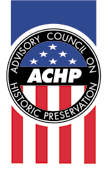 About ACHP
About ACHP ACHP News
National Historic
Preservation
Program
Working with
Section 106
Federal, State, & Tribal Programs
Training & Education
Publications
Search
Home
Preservation: One Key to Salvation for Cities and History
The following is an article by ACHP Chairman John L. Nau, III, that was published in Cleveland's The Plain Dealer October 9, 2002. The article coincided with an award for the preservation of the H.L. Hunley Confederate submarine that ACHP presented with the National Trust for Historic Preservation at the National Preservation Conference in Cleveland October 10, 2002.
Preservation
Is One Key to Salvation
for Cities and History
John L. Nau, III
Confederate submarines and Cleveland's "Quiet Crisis" may
appear to have little in common.
But the effort to raise the Confederate submarine H.L. Hunley and
the effort to raise a city are not so different.
The Plain Dealer has devoted a great deal of space and effort to
its Quiet Crisis series. On June 17, 2001, editor Doug Clifton wrote:
"Greater Cleveland must get serious about creating and backing a
master plan for economic development or face economic extinction."
As a businessman and as chairman of the Federal Advisory Council on Historic
Preservation, I know such commitment is the essential first step in turning
challenge into opportunity. Experience also proves that a coalition of
diverse interests is essential to success. That is true of submarines
as well as cities.
In 1995, a team formed by author Clive Cussler located the submarine
Hunley off the coast of Charleston, South Carolina. The find was
made a decade-and-a-half after the avid shipwreck historian and hunter
started searching for the Hunley (the first submarine to attack
and sink a surface ship).
Tomorrow the ACHP and the National Trust for Historic Preservation will
present the first Federal Partnership Award for Historic Preservation
during the Trust's annual preservation conference here in Cleveland. It
is being presented to a coalition of diverse Federal, State, and private
organizations
that—with differing individual purposes—nevertheless worked
together on one joint goal: recovering a priceless time capsule of history.
When the Hunley was found in 1995, it was not the end. Similarly,
when The Plain Dealer "found" the Quiet Crisis, it was
the beginning of a process that requires a similar partnership. It took
a lot of time and effort to find and raise an eight-person submarine.
Think of what it will take to raise a metropolitan area of three million
people. But also consider this: If so much effort for a single artifact
has proved so worthwhile for so many, then what is the value of an entire
city's past?
No single issue, no single interest, can by itself raise Cleveland's future. However, historic preservation can be an essential component to the city's success. By preserving your past and putting its tangible assets to new purposes, Greater Cleveland will go a long way toward creating the kind of dynamic and livable community that will help resolve problems associated with a flat economy, a population plateau, a stagnant tax base, a withering inner city, insufficient opportunities for recreation, culture and tourism, and an urban environment that does not entice people to want to work and live in a community.
Historic preservation positively addresses all of these issues; it can benefit a community economically, culturally, socially, environmentally and educationally. By taking advantage of existing assets—historic buildings, courthouses and battlefields—in adaptive reuses, communities can achieve economic diversity.
(As a recent article on this page noted, the film industry has spent
more than $22 million in Greater Cleveland since 1998. Part of the attraction
has been this area's architectural gems.)
The public is beginning to learn that Cleveland has taken substantial
steps toward preserving its past and thereby securing its economic future.
The Warehouse District is being revitalized and has already created desirable
living spaces where once there was primarily decay and decline. Other
areas of the city are beginning the process. Heritage tourism is a huge
industry that is only in its infancy, and heritage tourism—visiting
historic sites and communities—is only one aspect of the many economic
benefits of historic preservation.
Cleveland's preservation efforts will bring millions more hungry to experience and learn from the city's past, and eager to share in its future. It will help keep those born and educated here at home, and lure others who seek a congenial environment. As you progress with solutions to the Quiet Crisis, historic preservation should be integral to all your endeavors.
Nau is Chairman of the Federal Advisory Council on Historic Preservation.
Read about the Award for Federal Partnerships in Historic Preservation presented for the preservation efforts of the raising of the Hunley
Posted November 4, 2002